Growing squash successfully is easy once you know how to nurture it. However, before taking your first succulent bite of the season, you must sow & nurture your squash. Read on to learn more about navigating the life cycle of your squash from germination to harvest.
In the outdoors, squash grow throughout the summer months in a 70+ degree climate, fertile soil, with proper watering in the morning to a depth of 6 inches. In a greenhouse, you can grow squash year-round.
Squash comes in several varieties that can be grown in 5-gallon containers or in a garden space of 3-5 feet to allow for the vine to spread. Also, consider straw bales and raised beds, since these can save space. If you’re inclined to grow squash year-round, check out our complete article on creating an indoor greenhouse.
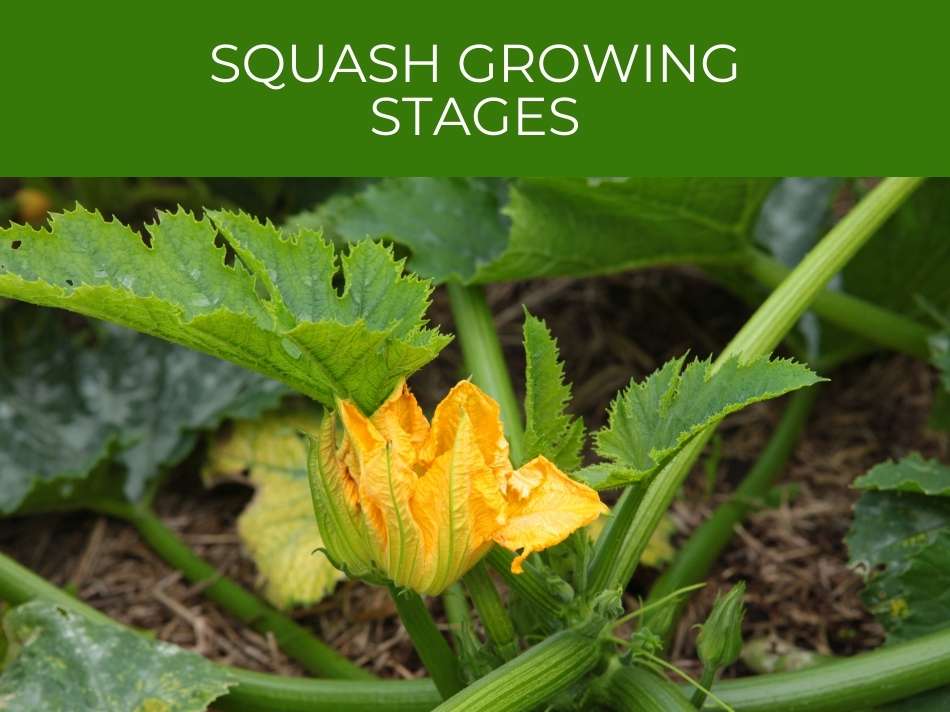
Squash Growing Stages
Like similar vegetables, such as cucumbers, squash plants go through several stages of growth during their lifespan; but what are these growing stages?
The first stage is germination. Next is the seedling. The vegetative stage begins as the plant’s root system and most of its foliage is developed. The reproductive stage begins with the blooms and ends as the fruit ripens. Finally, the last stage is harvest.
Whether you start your garden with seeds or seedlings, you will need to ensure the temperature of the soil and the climate are optimal.
Seeds should be planted ½ inch deep.
Once sprouted, squash plants should be spaced about 3 feet apart.
Squash thrive in a warm climate with the soil temperature at least 65-70 degrees for germination.
Be sure your squash plants have full sun at least 6 hours a day.
If you notice your vine wilting, it needs to be watered, preferably in the morning; and, remember, both over-watering and under-watering can be problematic.
Just like tomatoes and cucumbers, squash is a summer favorite when it comes to vegetables.
Check out our full guide to companion planting.
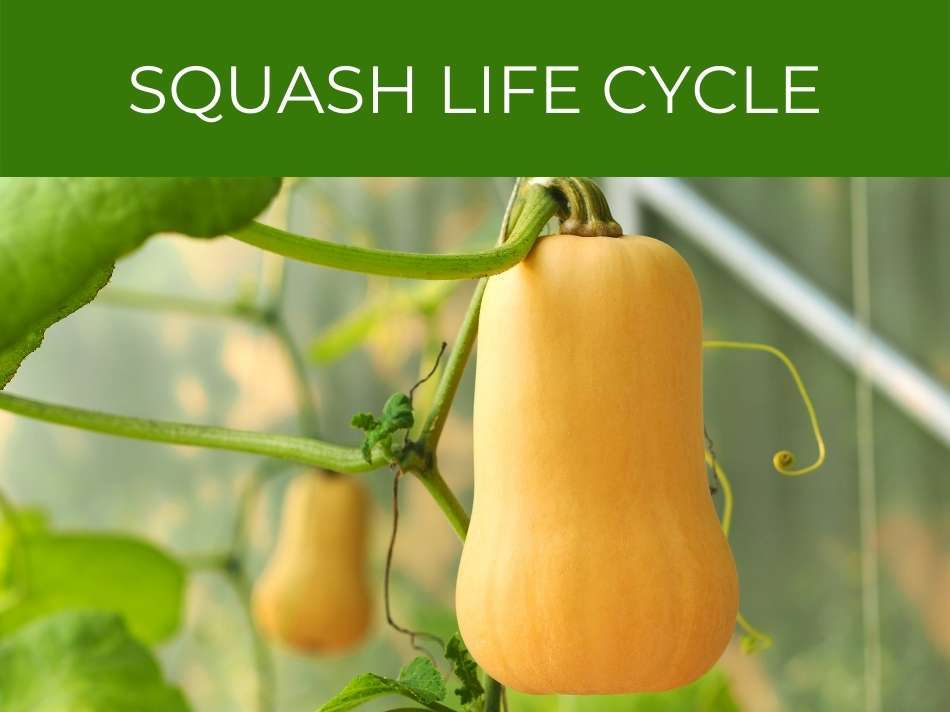
Squash Life Cycle
Every plant has its own life cycle with many similarities.
The squash life cycle starts with a seed approximately a ½ inch long. It sprouts a seedling that roots & grows into a vine. Once the blooms yield fruit, the fruit grows to optimal maturity. Harvest the fruit when it reaches 6 inches for food or seeds in which case the life cycle starts again.
Squash plants are very similar to cucumbers as they are both vines with fruit from blooms which makes caring for them similar.
See how to grow English cucumbers from seed.
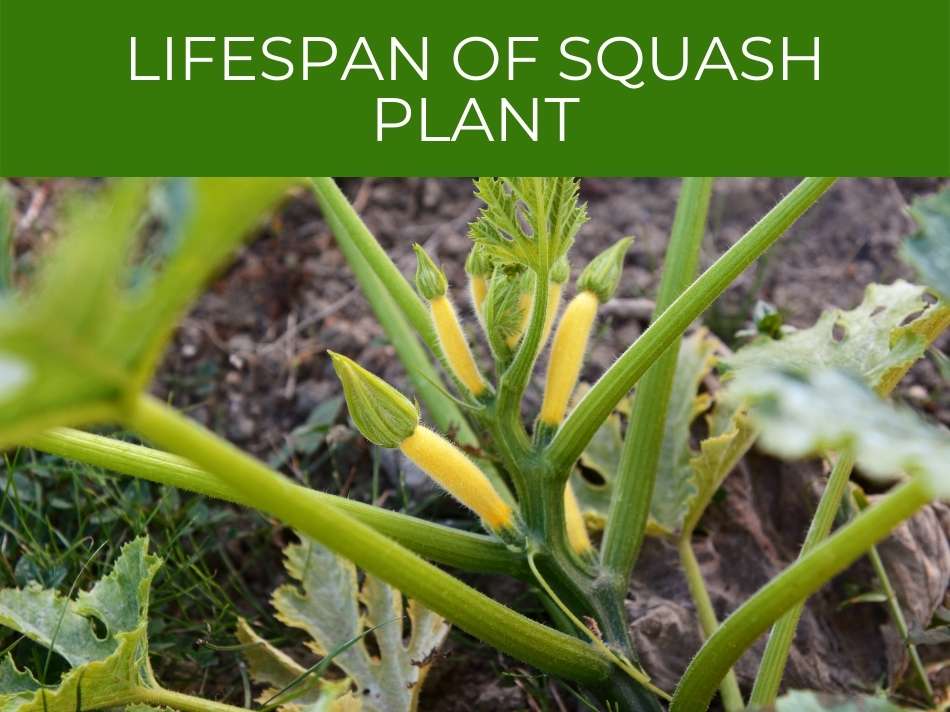
Lifespan of Squash Plant
The lifespan of a squash plant is subject to the health of the plant, climate, and age.
If you’ve kept your plants healthy and have been harvesting the squash as it becomes ripe, they can continue to bear all summer and into the fall until the first frost. Be sure to pick the fruit as it ripens so the vine can produce more. Just a few squash plants will yield enough squash for the average family.
If you plan to plant more than a few squash, you may want to stagger your planting a few weeks or every 10 days apart in order to give you a consistent harvest of fresh squash.
Staggering can also ensure your success in growing squash in case weather or insects affect the health of any of your plants.
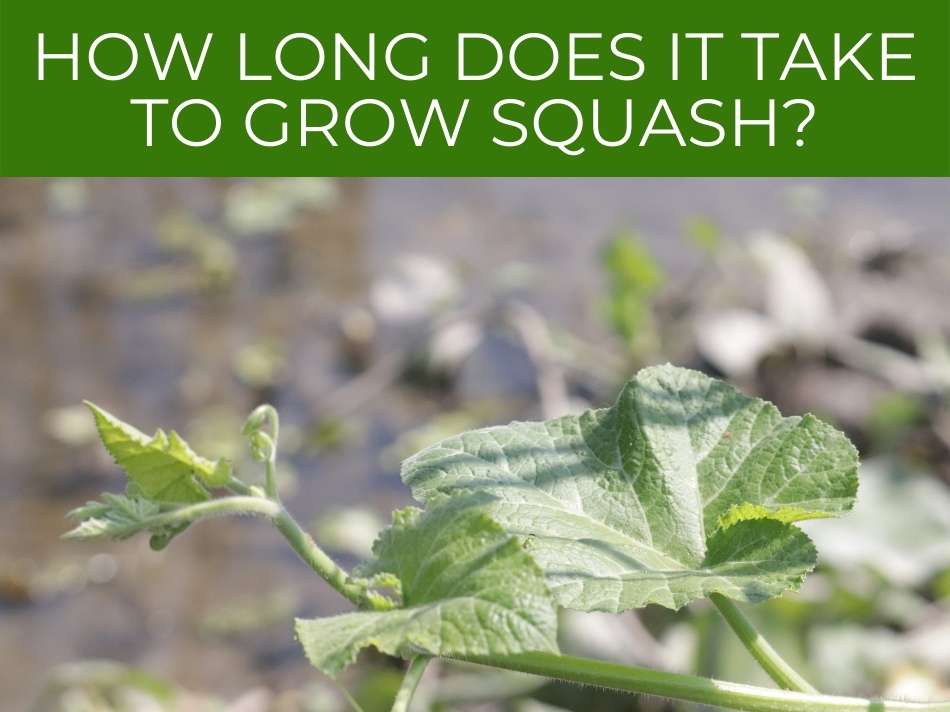
How Long Does It Take to Grow Squash?
From seed to seedling to, finally, a mature squash fit for the dinner table takes some time.
Depending on growing conditions, it takes between 45-55 days to grow a squash from seed to maturity, optimally. However, it is important to note, that if the squash plant is not in full sun for most of the day at 70+ degrees, the time from germination to ripe fruit may be up to 60 days or longer.
Start by planting either 3 seedlings or 6 seeds; once the seeds have sprouted, leave the best 3 seedlings and thin the others out.
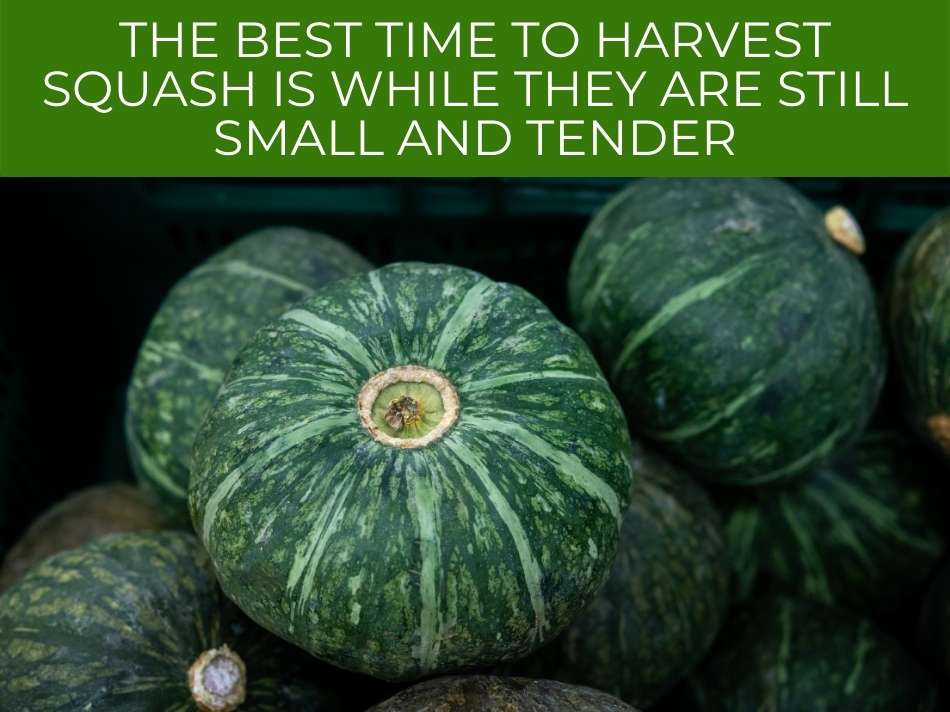
The best time to harvest squash is while they are still small and tender.
Be sure to pick your squash when it is about 6 inches long; this will give you the best quality.
If squash is left on the vine too long, the skin will begin to harden as will the seeds.
If you notice your plant is not producing healthy fruit, here’s our article with possible reasons why.
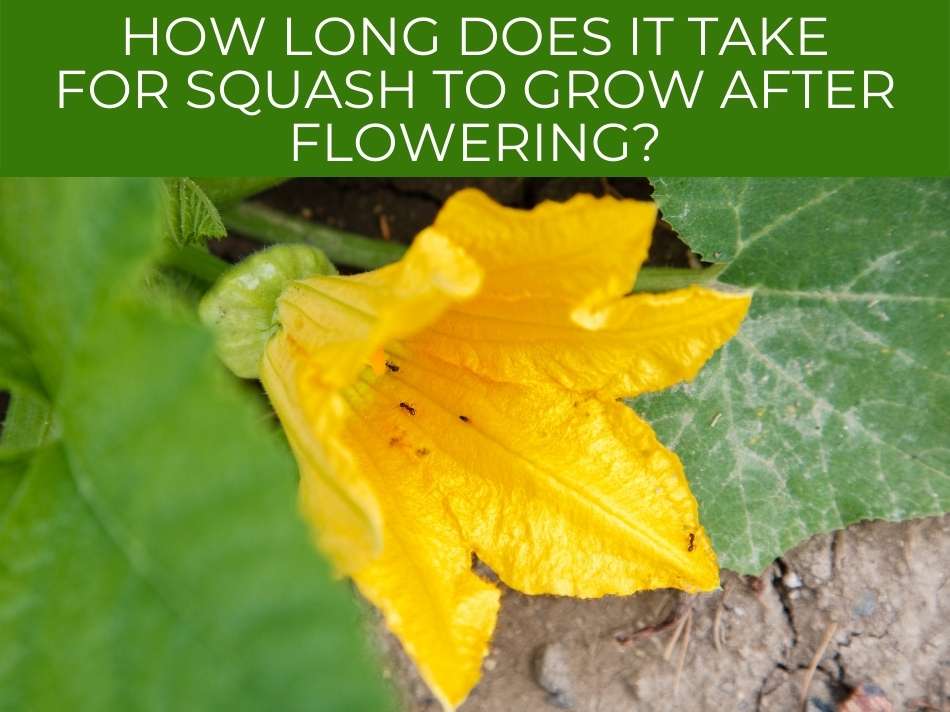
How Long Does It Take for Squash to Grow After Flowering?
After your vine has grown and spread out several feet, you’ll notice it beginning to bloom.
Summer squash typically takes 7 – 9 days after flowering, whereas winter squash requires 45 – 55 days to mature after flowering. This is under optimal conditions regarding climate and quality of the soil.
It’s important in growing your squash successfully that the blooms are adequately pollinated.
The flowering part of the plants produces pollen that needs to be transported, usually by insects, wind or water, in order for the bloom to produce fruit.
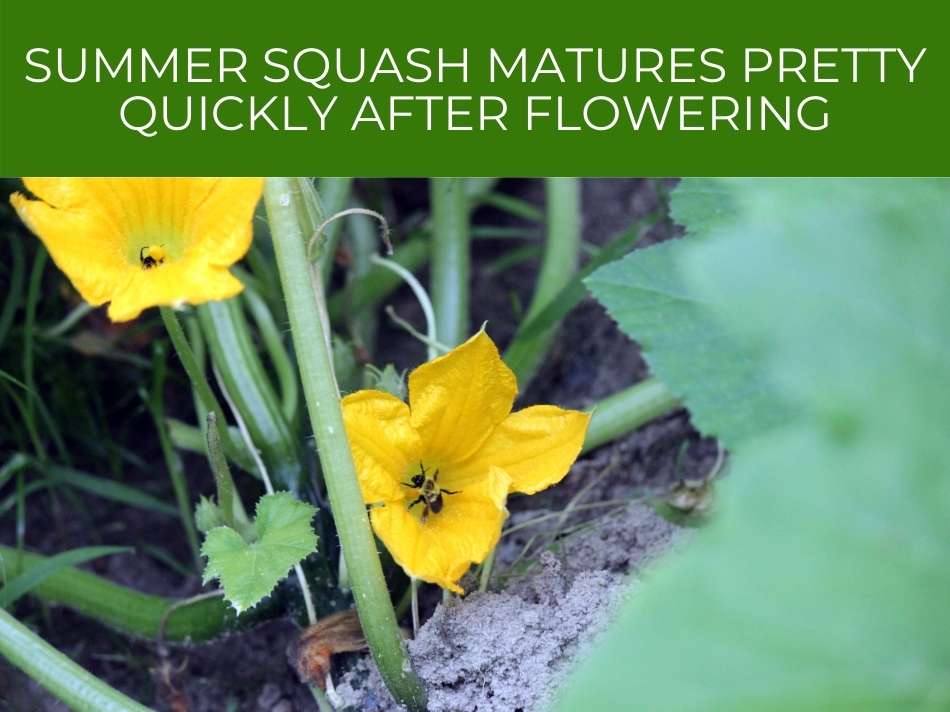
Remember that summer squash matures pretty quickly after flowering (usually within 1 week after flowering).
However, winter squash varieties take much longer to mature after flowering–usually 45-55 days.
Learn more about why pollination is super important to growing squash successfully.

Zucchini Plant Stages
Like the more common yellow squash, zucchini squash plants go through similar stages of growth during their lifespan.
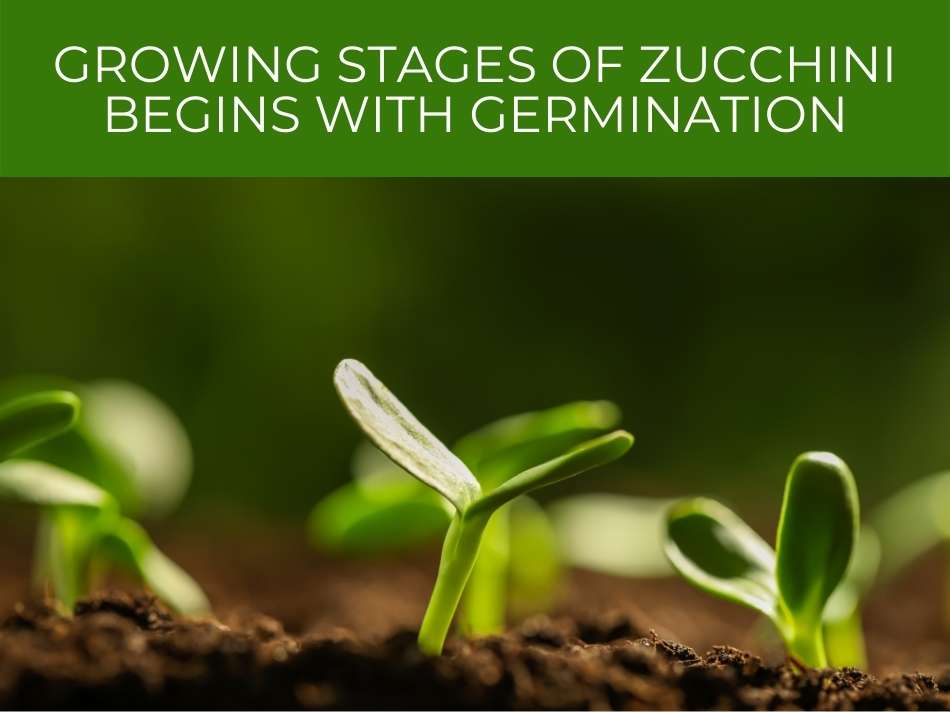
Growing stages of zucchini begins with germination. Next is the seedling stage which yields to the vegetative stage. Roots grow and become sturdier, and its foliage is developed. Pollinated funnel-shaped yellow blooms bear fruit during the reproductive stage. The green fruit ripens as the zucchini enters the final stage, harvest.
While the flesh of both yellow squash and zucchini have a mild, nutty flavor, the skin of the yellow squash may or may not be bumpy whereas the zucchini’s skin is always smooth.
Zucchini, or zucchini squash, are part of the large genus Cucurbita which includes summer and winter squash, gourds, and pumpkins.
Vegetables in the Cucurbita genus thrive in warm climates and are successfully grown in parts of North and South America.
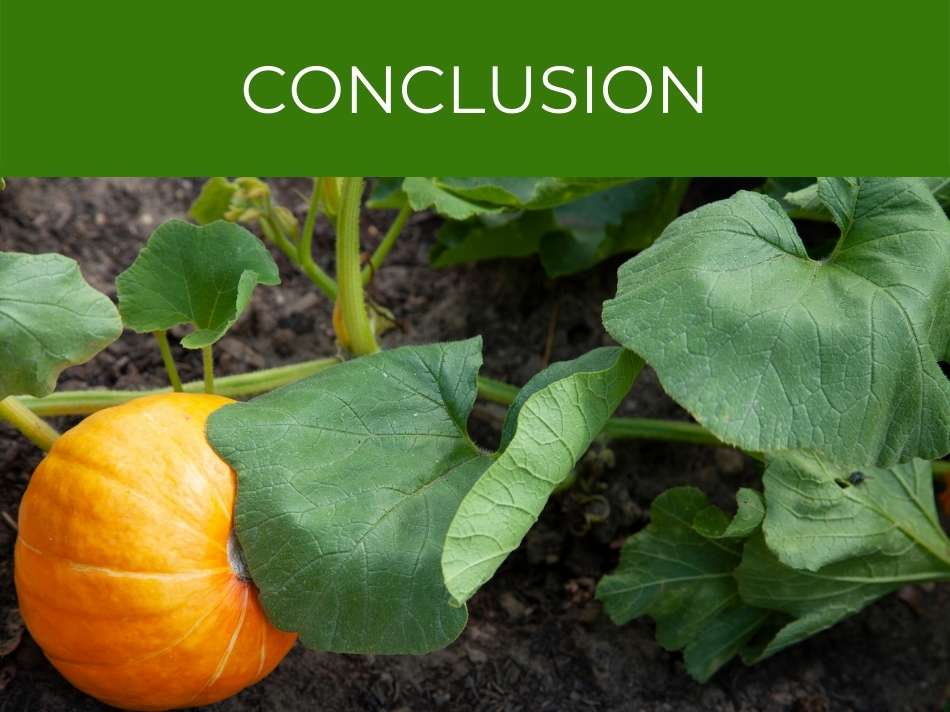
Conclusion
Once you’ve harvested your squash, what’s next?
Definitely, you’ll want to enjoy all the tasty dishes squash lovers adore.
Squash is versatile, making it one of the most sought-after vegetables for a summer side dish.
Whether it’s zucchini bread, squash casserole, or grilled squash, there’s a different way to prepare your squash every day of the week.
Or, if you’re interested in selling your freshly harvested squash, you can set your price per pound or by number of squash.
No matter what, you’ll have the satisfaction of having raised a tasty herbaceous vegetable that brings joy to those fortunate enough to find it on their dinner plate.


